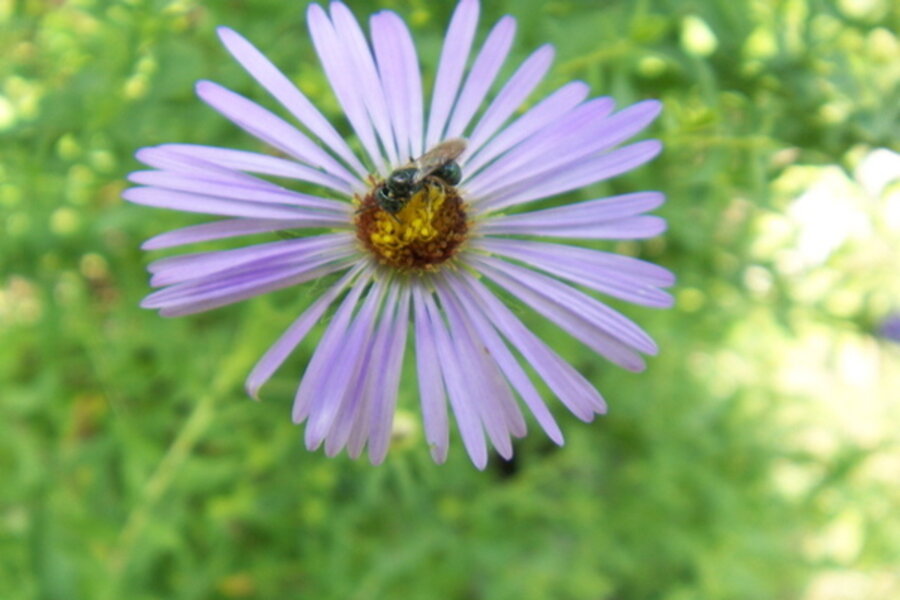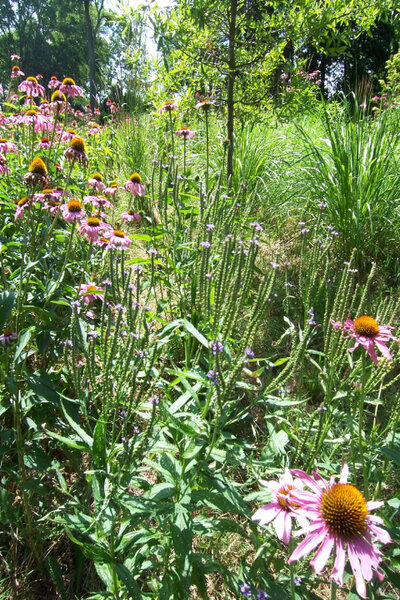Native plants help sustain birds and beneficial insects
Loading...
Recently, I was reading an article about biennials in a magazine devoted to people who raise bees. Like people who feed birds, I have a lot of respect for folks who extend themselves to care for pets or other non-human beings.
The article was well written and interesting. What I began to notice, though, was that almost all of these plants that are a routine part of our gardens were from somewhere else.
Plants to attract bees
Canterbury bells (Campanula spp. – Southern Europe), forget-me-not (Myosotis spp. -- Europe), hollyhock (Alcea spp. – China), honesty (Lunaria annua – Europe), mullein (Verbascum spp. – Asia and Europe), and sweet william (Dianthus spp. – China and Russia) are major players in our gardens.
The only native plant on the list was the pansy of the Viola family. There are many native violas.
While I am not a zealot about native plants, I think it’s valuable for us to balance our showy plants of origins elsewhere with natives to feed our insects and thus our birds.
This year I qualified as a Doug Tallamy groupie, having heard him speak at three different conferences. He is an entertaining presenter with science delivered in understandable ways to large audiences who cheer him. Not an easy task. His book, "Bringing Nature Home," is equally interesting.
I am not the only garden designer who is rethinking reliance on ornamentals without consideration of their origins. Julie Moir Messervy, who designed the Toronto Music Garden (to honor Yo Yo Ma), also spoke at one of these conferences, and she has blogged about the changes in her approach after hearing Doug.
I'm not talking here about a rough and tumble landscape of weeds. Beautiful ornamental plants like the ones listed above can be combined with the native plants that insects evolved with and specialize in.
The monarch connection
Monarch butterflies are in decline because they evolved to eat milkweed, and it is now becoming scarce. That’s what they eat – they can’t really switch to something else.
Specializing in milkweed to feed on and lay eggs on when field after lawn after park is cleared of anything resembling a “weed” is proving disastrous for monarchs.
Birds don’t feed their babes seeds …they feed them highly nutritious caterpillars that would be abundant if the moths and butterflies could lay their eggs on plants they could eat.
Our local and regional insects did not evolve with plants from across the globe – or even across the country. We buy millions of nectar-producing butterfly bushes because we love to see the beautiful creatures in our gardens – but they cannot lay their eggs on a butterfly bush because they cannot eat the leaves.
Doug Tallamy is shining a light on the ideas that limit sharing our land with other creatures that are part of the web supporting life on our planet.
We don’t need to change everything. By adding a good selection of native plants to our gardens, we can benefit -- and the birds and insects can benefit. Conversely, our beloved and extensive lawns support one insect -- Japanese beetle grubs.
A few beautiful native plants that could join the list above might include columbine, liatris, hardy geranium, amsonia, hibiscus, goldenrod, echinacea, phlox, aster, and bee balm. Together they will make a cheery and livelier garden.
[Editor's note: For more on this subject, see also: Native plants help birds and small wildlife.]
To receive Monitor recipes weekly sign-up here!
-----
Donna Williamson blogs regularly at Diggin' It. She's a master gardener, garden designer, and garden coach. She has taught gardening and design classes at the State Arboretum of Virginia, Oatlands in Leesburg, and Shenandoah University. She’s also the founder and editor of Grandiflora Mid-Atlantic Gardening magazine, and the author of “The Virginia Gardener’s Companion: An Insider’s Guide to Low Maintenance Gardening in Virginia.” She lives in the Shenandoah Valley of Virginia. To read more by Donna, click here.






